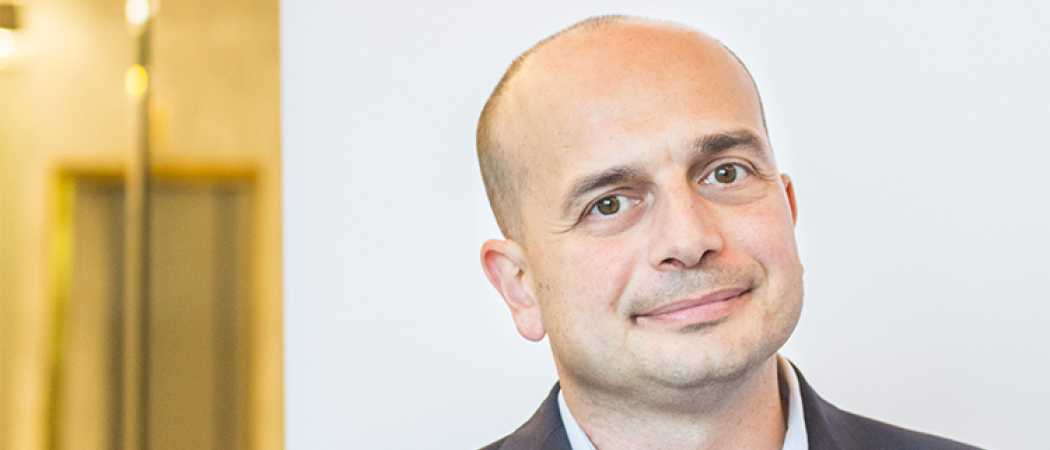
Vincenzo Palermo receives SEK 15 million in funding for lab equipment and to be able to form a new research group.
To ensure Chalmers as key player for graphene based two dimensional (2D) composite materials research, Chalmers Foundation invests SEK 15 million into a new research group. 2D materials are only one-atom-thick and have the potential to become super materials to be used for health sensors, water filters, new cool electronics or better batteries.
The discovery of graphene allowed researchers to produce and process a wide range of two dimensional (2D) materials. The next step is to combine these one-atom-thick, large and flexible nanosheets with polymers, metals or molecules in order to become new innovative nano-composites – super materials.
In order to empower Chalmers as a key player for the research on graphene-based 2D composites, the Chalmers University of Technology Foundation will invest SEK 15 million in the next three years to finance laboratory equipment and to part-finance a research group under the supervision of Professor Vincenzo Palermo.
Vincenzo Palermo has for the last four years been the leader of activities on nano-composites of the Graphene Flagship. Since 2017 he is also the vice-director of the Graphene Flagship and professor at the Department of Industrial and Materials Science. In his research, Vincenzo Palermo uses nanotechnology and supramolecular chemistry to create new materials with applications in mechanics, electronics and energy. In particular, he works with the production of carbon-based composite materials as graphene.
Graphene is a crystalline material consisting of one layer of carbon atoms, arranged in a hexagonal pattern. The material is 100 times thinner than a human hair but 20 times stronger than steel. At the same time, graphene is light and flexible, and also conducts both electricity and heat very well.
As graphene has these properties, there are many potential uses. Improved batteries and touch screens for mobiles and tablets are some examples but if graphene is combined with layers of other materials, the possibilities are even bigger.
– Yes, the potential is enormous and now our imagination is put to a test. Graphene could be used for sensors for measuring of e.g. cholesterol, glucose or haemoglobin levels in the body, new antibiotics or cure for cancer, or perhaps for curtains that capture sunlight and heat up the house. Another thing is that graphene-based materials shall allow water to pass through it while blocking other liquids or gases. It could therefore be utilized as a filter of, for instance, drinking water. Also, because the material is so strong and weighs so little it can be used to produce new composites in aircrafts or other vehicles, in order to save weight and reduce energy consumption.
Thanks to the funding granted by Chalmers Foundation, Vincenzo Palermo will be able to expand his research team.
– I am very happy for the opportunities this gives me. The funding will lead to the development of innovative composites of 2D materials with polymers and metals, the creation of new industrial collaboration with key partners and, last but not least, to the training of a new group of young researchers from Chalmers.
Vincenzo Palermo obtained his Ph.D. in physical chemistry in 2003 at the University of Bologna, after working at the University of Utrecht (the Netherlands) and at the Steacie Institute, National Research Council (Ottawa, Canada). Now Vincenzo Palermo holds a position as research professor at Chalmers Department of Industrial and Materials Science in Gothenburg, Sweden, and is acting as vice-director of the Graphene Flagship.
The donation from the Chalmers University of Technology Foundation comprises SEK 15 million divided over three years by SEK 5 million per year during the period of 2018-2020. The money is intended to part-finance a research group to Professor Vincenzo Palermo and to finance laboratory equipment. The research group is supposed to consist of two research assistants and two post-docs.
This release was written by Nina Silow and first published 5 December by Chalmers University of Technology.





 A unique international forum for public research organisations and companies to connect their external engagement with strategic interests around their R&D system.
A unique international forum for public research organisations and companies to connect their external engagement with strategic interests around their R&D system.